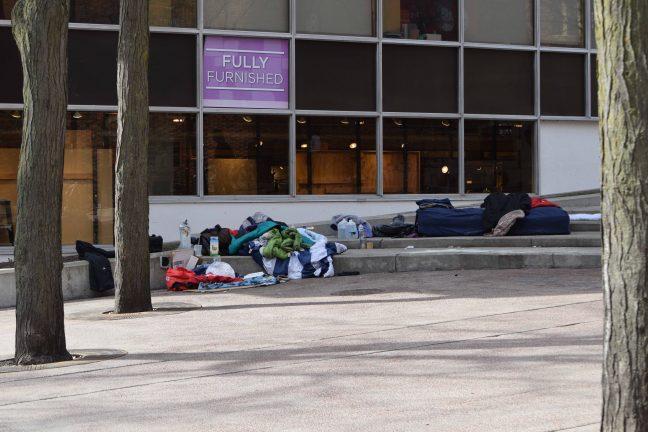2023 has seen increasing rates of homelessness in many major U.S. cities according to the Wall Street Journal. Some cities, such as Milwaukee, have experimented with a Housing First model to alleviate the crisis of homelessness, according to the Milwaukee County Health and Human Services website.
Madison is also slowly shifting towards a Housing First model.
According to the city of Madison’s Community Development Division website, Madison is committed to progressing towards stable housing for those experiencing or at risk of homelessness, ranking the Housing First approach at the top of its list of principles to achieve this goal.
But, Rev. Dr. D. Jonathan Grieser, the rector of Grace Episcopal Church on Capitol Square, said current efforts in Madison won’t be enough to house all of the people in need. Grace hosted the Men’s Drop-In Shelter for over 35 years until it was moved into a new building on Zeier Road in 2020.
“There are far more unhoused people [in Madison] than even the most robust Housing First program could handle,” Grieser said. “And with the affordable housing crisis in Madison and nationwide, I’m not sure enough units could be built.”
According to Milwaukee County Health and Human Services, the Housing First philosophy asserts that individuals ought to be given housing access without pre-conditions. On the contrary, some housing assistance programs require that recipients meet employment, sobriety or mental health requirements to receive housing.
Without a Housing First model, people who fail to meet certain behavioral or medical requirements may be denied access to housing assistance, according to the National Alliance to End Homelessness.
IMPACT Systems Change Director Emily Kenney oversees the implementation of a coordinated entry system for Milwaukee County. Kenney said Housing First puts pre-conditions to the side so that homelessness can be addressed directly.
“Housing First flips the previous model … on its head,” Kenney said. “There might be other … needs that a person experiencing homelessness has, but those needs won’t be addressed until we address … the safety and security of having a stable place to lay your head.”
Kenney said Milwaukee County went all in on the Housing First method in 2015. Kenney said Milwaukee County refused to support additional shelters as long as more housing is needed. While they have scaled back the approach in recent years, the original intention remains.
“The county government said we’re buying into this, and we need you all to [as well],” Kenney said.
The county’s proclamation spurred housing providers to streamline housing processes. All Milwaukee County shelters now offer a housing component, Kenney said.
Since Housing First was adopted by Milwaukee in 2015, the city saw a 92% reduction in the unsheltered population, according to a press release from Milwaukee County Executive David Crowley. Because of this, the U.S. Department of Housing and Urban Development recognized Milwaukee for having the lowest unsheltered population per capita in the nation as of 2022.
“I’m happy to say that by prioritizing an evidence-based approach and maximizing collaborative efforts in the public and private sectors, we have reached this significant milestone, but the work is not done,” Milwaukee Crowley said in the press release. “As a County, region, and whole community, we must use this momentum to accelerate our efforts to invest upstream and end chronic homelessness in Milwaukee County.”
In Milwaukee, Housing First has also lowered overall costs. According to the Milwaukee County Health and Human Resources website, Housing First costs the city $2 million per year, while reducing Medicare costs by $2.1 million, mental health costs by $715,000 and legal costs by $600,000 per year.
“Housing somebody is cheaper than sheltering them, and certainly cheaper than institutionalizing them,” Kenney said.
But, according to a 2018 study by The National Academies of Sciences, Engineering and Medicine in 2018 found no substantial evidence that permanent supportive housing positively improved the health of recipients. Despite this, the study’s authors said current data on this topic is lacking and more rigorous research should be conducted.
In Madison, a new men’s shelter is under construction on Bartillon Drive which will replace the Zeier Road shelter in 2025, and the Salvation Army of Dane County is opening the Shield Apartments on East Washington Street to provide longer-term housing for guests by 2024, according to The Badger Herald. The shelter will offer services to support housing, according to Grieser, showing Madison is implementing Housing First techniques, just not with the speed that Milwaukee has.
“Shelters [are] the band-aid, but really, we need to be advocating for enough safe, stable and affordable housing for everybody, especially those with lower income,” Kenney said.


